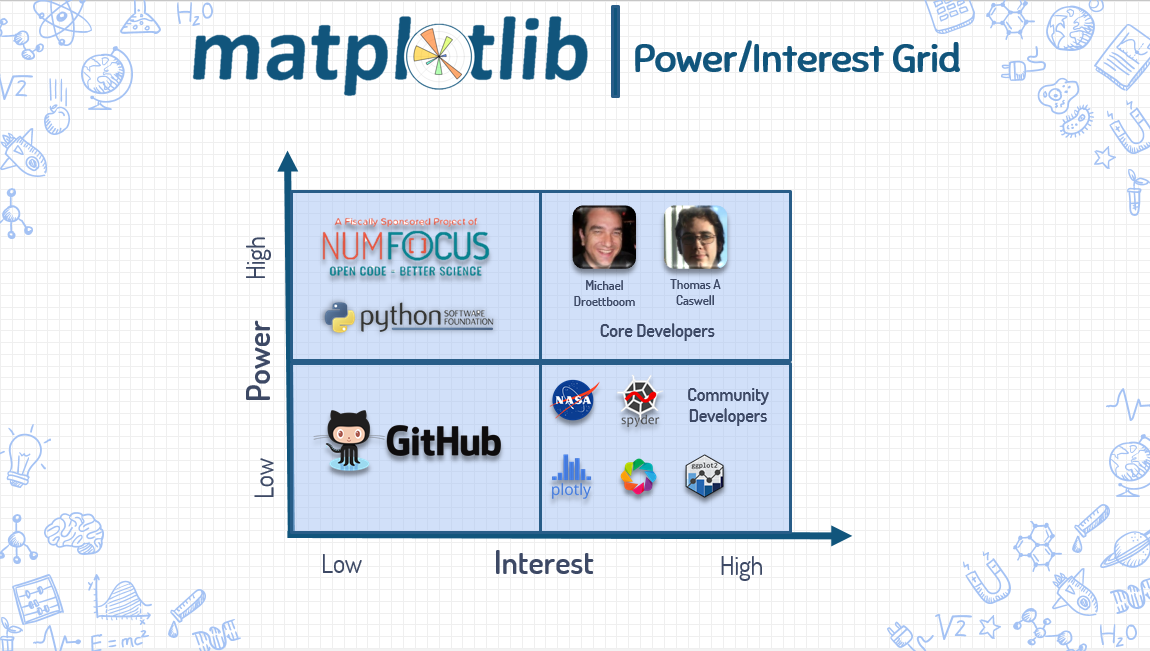Matplotlib - The Python 2D Plotting Library
By Andreas Maruli C Pangaribuan, Helmiriawan, Rizky Dharmawan, and Sindunuraga Rikarno Putra.
Delft University of Technology
 The Matplotlib logo taken from their website
The Matplotlib logo taken from their website
Abstract
Matplotlib is a data plotting library that is often considered as the grandfather of visualization libraries in Python. The project is pioneered by scientist John Hunter back in 2003 and has since been developed by the open source community. This chapter aims to offer an outside point of view of the Matplotlib software architecture. At first, an analysis of the external entities of the system is given. Next, a closer look at the underlying architecture of Matplotlib is presented. Lastly, a deeper analysis into the system is done to identify technical debts that exist in Matplotlib and some possible solutions.
Table of Contents
- 1. Introduction
- 2. Stakeholders
- 3. Context View
- 4. Functional View
- 5. Development View
- 6. Evolution Perspective
- 7. Technical Debt Analysis
- 8. Conclusion
- References
1. Introduction
Matplotlib provides a convenient tool for creating 2D plots of data using Python. It is an open-source project that is fully supported by the Python scientific computing community. Matplotlib is now used by a variety of people for analysis and research purposes and was even used by NASA for data visualization of the Phoenix spacecraft exploration on Mars.
Matplotlib was initially developed by a group of self-taught programmers with a scientific background. The founder of Matplotlib, John Hunter, started developing it to visualize biomedical data during his post-doctoral research in Neurobiology [1] to visualize electrocorticography (ECG) data. At that time, the available proprietary data visualization tool was a limited resource, and John Hunter wanted to find an alternative tool that was available for all his team. MATLAB was the most popular alternative at that time, but he found that as a software program, it has limited capabilities in managing large biomedical data from various sources. Therefore, he opted to create a new tool that is similar to MATLAB using Python, which as a programming language has an advantage in handling data.
Matplotlib eventually evolved from a small project by a group of researchers into a widely used open-source tool. It is now one of the core component for the scientific Python stack. Matplotlib being a project that was initially developed by people without vast experience in software engineering makes its architecture and evolution interesting. The goal of this chapter is to analyze the architecture of this interesting project and present an outside overview of the system. To analyze the architecture of Matplotlib, we will refer to the guidelines made by Nick Rozanski and Eoin Woods [2].
2. Stakeholders
To start off our analysis, we will look at the stakeholders involved with Matplotlib. A stakeholder is an entity of a system architecture that consists of an individual or an organization that has importance and interest to realize a system. Figure 1 shows a summary of identified stakeholders of Matplotlib based on the classification proposed by Nick Rozanski and Eoin Woods [2].
Overview
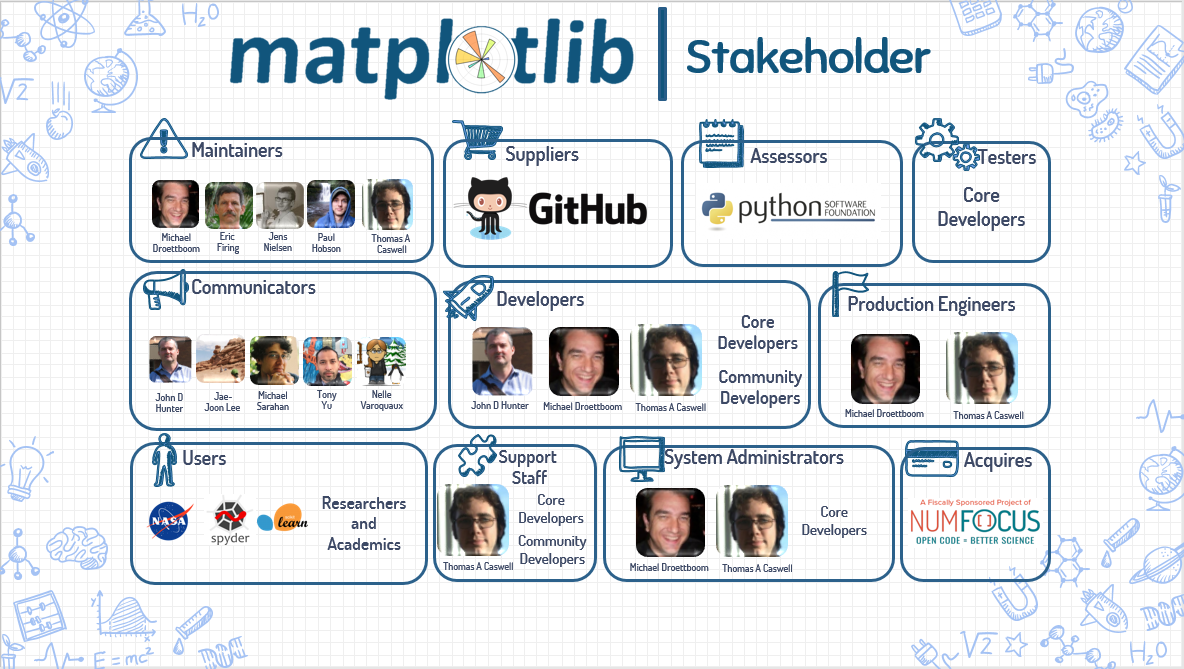
Figure 1. The Stakeholders of Matplotlib
There are no corporate sponsors for Matplotlib, but the main funding is provided through donations via the NumFOCUS organization, which can be classified as an Acquirer. The Python Software Foundation (PSF) can be categorized as an Assessor of Matplotlib because they oversee the system's conformance to standards and legal regulation. Meanwhile, the development of Matplotlib is coordinated via GitHub, which can be classified as a Supplier.
The Developers of Matplotlib are divided into core developers and community developers. John D. Hunter is the founder and initial lead developer of Matplotlib, but he passed away in 2012. Now both Michael Droettboom and Thomas A. Caswell act as lead developers. They are accompanied with 15 other core developers in developing Matplotlib. Many of the core developers also act as Maintainers, since they review all contributions to make sure it doesn't break the system. Matplotlib's Support Staff consists of a few core developers such as Thomas A. Caswell, Paul Hobson, and Eric Firing, and also some community developers, such as Nelle Varoquaux.
The Users of Matplotlib are varied as it is a generic data plotting tool, but based on depsy, quite a lot of them are from the research and academic background. Some large projects also use Matplotlib, such as NASA and Spyder. Some Python libraries such as scikit-learn and seaborn are also users since they use parts of Matplotlib inside their library. Users can read the documentation to find out how to use Matplotlib, which is written by the Communicators, mainly John D. Hunter, Jae-Joon Lee, Michael Sarahan, Tony Yu, and Nelle Varoquaux.
Apart from the proposed definition above, there are also Event Organisers who organize annual events. An example is the SciPy conference, which gathers people who develop open source scientific projects using Python. In such events, the participants not only showcase their latest projects, but also learn and collaborate with other developers.
Power Interest Grid
The power versus interest relation of the stakeholders are shown in Figure 2 and are classified into 4 categories :
Low power and low interest : GitHub is a stakeholder who does not has any control over Matplotlib, and does not has a significant role in the development of Matplotlib.
Low power and high interest : Users, competitors, and community developers of Matplotlib are stakeholders who follow the latest development of Matplotlib and are active in the discussion of Matplotlib, but they do not have significant power to directly change the Matplotlib system.
High power and low interest : NumFOCUS and the Python Software Foundation (PSF) are stakeholders who directly affect the development of Matplotlib. NumFOCUS though only provides funding without restricting the development of Matplotlib, while the PSF develops Python which in turn directly affects Matplotlib itself. For both stakeholders, Matplotlib is only one of the few projects they affect and are not their main interest.
High power and high interest : Michael Droettboom and Thomas A. Caswell are the lead developers of Matplotlib. Along with other core developers, they have significant interest and power in developing Matplotlib.
3. Context View
Next we will look into the boundary that separates between Matplotlib and its environment, a.k.a the system's runtime context. This describes what the system does and doesn't do, and how the system interacts with external entities [2].
3.1. System Scope
According to the introduction of Matplotlib at its website [3], Matplotlib is defined as "a library for making 2D plots of arrays in Python". The scope of the software is clearly defined here. It is constrained to focus on one task, which is 2D plotting, and on a specific platform, which is on the Python programming language. From the history of its development, we can also conclude that Matplotlib was designed to be a free plotting library that is easy to use out of the box and is mainly targeted at the academic community.
The Matplotlib website [3] also states the design philosophy which John Hunter held to when developing Matplotlib.
Matplotlib is designed with the philosophy that you should be able to create simple plots with just a few commands, or just one! If you want to see a histogram of your data, you shouldn’t need to instantiate objects, call methods, set properties, and so on; it should just work.
This is further elaborated by a list of requirements that John Hunter had in mind when looking for a visualization tool.
When I went searching for a Python plotting package, I had several requirements:
- Plots should look great - publication quality. One important requirement for me is that the text looks good (antialiased, etc.)
- Postscript output for inclusion with TeX documents
- Embeddable in a graphical user interface for application development
- Code should be easy enough that I can understand it and extend it
- Making plots should be easy
3.2. External Entities
The connections between Matplotlib and its environment is summarized in Figure 3.

Figure 3. Context View Diagram
The external entities can be split into three groups:
A. Competitors
When Matplotlib was initially created, there was no other reliable Python visualization library available. But now Matplotlib faces quite a few competition for visualizing data in Python. The competitors are mainly split into two types:
Data plotting tools are the same as Matplotlib and want to make plotting data easier for people. Most of these tools extend Matplotlib such as seaborn that builds on top of Python by adding more beautiful default plot designs, and ggpy that adopts new features from the ggplot2 R package.
Modern visualization tools on the other hand try to tackle newer visualization problems out of the scope of Matplotlib. An example is bokeh and plot.ly that both focuses on generating interactive visualization that can be embedded on the web.
B. Software Platform & Dependencies
Matplotlib is developed as a Python package and is hosted on the Python package repository (PyPI). A small part of the Matplotlib code is also written in other languages such as C++ and objective C for low level optimization.
Platforms : Matplotlib is well tested for compatibility on all three major operating systems (Windows, Linux, and OSX). Matplotlib enables image generation across platforms by supporting most UI rendering platforms (such as linux's gtk and OSX's macosx) and image formats (jpg, svg, etc).
Dependencies : Most dependencies are standard libraries such as pyparsing and dateutil, and also image format libraries such as libpng. Two libraries which Matplotlib has strong dependencies on are numpy which is used for numerical operations and six for backward compatibility with Python 2. A complete list can be found on the Matplotlib website [3].
C. Development & Community
A platform that plays an important role during development is GitHub, which is used for code versioning, issue tracking and project management. All code gets tested and integrated via continuous integration tools. Testing of the code uses the pytest and Tox package, and code coverage is tested using Codecov.
The main communication channel used in the development of Matplotlib is through their GitHub repository and their mailing list. More open discussion is done via Google Hangouts and the Matplotlib Gitter channel. The Matplotlib developers also provide support to users through Stackoverflow.
4. Functional View
In order for Matplotlib to handle 2D plotting, it is conceptually split into three layers, which can be viewed as a stack [1]. The higher layers depend on the lower layers, while the lower layers are independent of higher layers. The three layers can be seen in Figure 4.
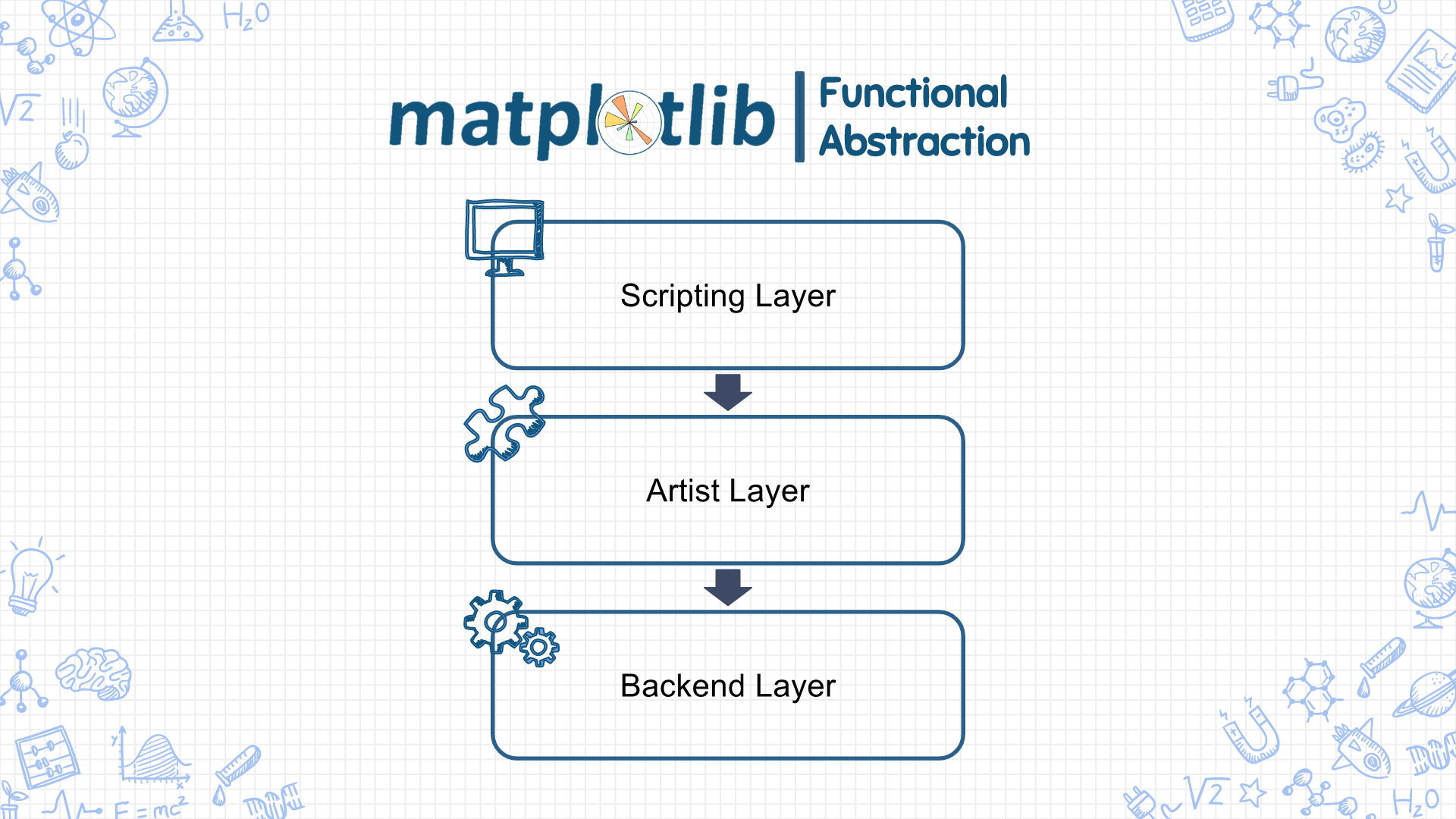
Figure 4. Functional Abstraction of Matplotlib
Backend Layer
Matplotlib encapsulates functionalities that interact directly with the environment it is run on into the backend layer. There are three main components in this layer:
FigureCanvas: This component handles the concept of a surface that is drawn into to make the plots, a.k.a "the canvas".Renderer: This component does the drawing of the plots on the surface, a.k.a "the paintbrush".Event: This component handles user inputs such as mouse or keyboard events, a.k.a "the viewer".
Through this abstraction, Matplotlib can be extended to work on different platforms including various UI rendering platforms and image formats. Additionally, the backend achieves image consistency between platforms through usage of a C++ 2D graphics library called Anti Grain Geometry.
Artist Layer
From the previous analogy, the artist layer is the object that knows how to use the paintbrush (Renderer) to draw on the canvas (FigureCanvas). Every image component inside a plot made by Matplotlib (axes, legends, etc) is an instance of the Artist class and communicates with the backend through the draw function. In fact, most of the heavy-lifting is done in this layer and it comprises most of the code inside Matplotlib.
There are two types of Artist objects, Primitive Artists which draws basic objects such as Line2D and Circle, and Composite Artists which consists of multiple Artists. The most important Artist object in Matplotlib is Axes which is responsible for composing the 2D data plots by combining multiple other Artist objects.
Scripting Layer
With the artist layer, programmers are actually already able to create 2D plots. The scripting layer however encapsulates the lower level image component renditions with a layer that is designed to be easy to use by the average user. This is done to comply with the initial design goal of Matplotlib which is to create a 2D plotting tool that can be used interactively like in Matlab.
The scripting layer is accessed through the pyplot module and contains methods to create commonly used plotting graphics such as the histogram or the scatterplot. This layer also handles additional plot arguments such as setting the color of the plot or the plot labels, through the use of Python's **kwargs which captures all keyword arguments that are passed together with a method call. pyplot then forwards it to the correct Artist component to be configured.
5. Development View
We will now take a closer look at the code structure and development process of Matplotlib to derive the architecture used to implement the designed functionality of Matplotlib as well as the strategies employed to standardize its design and development.
5.1. Codeline Organization
Code functionality inside the project can be split into four large sections by their roles as can be seen in Figure 5.
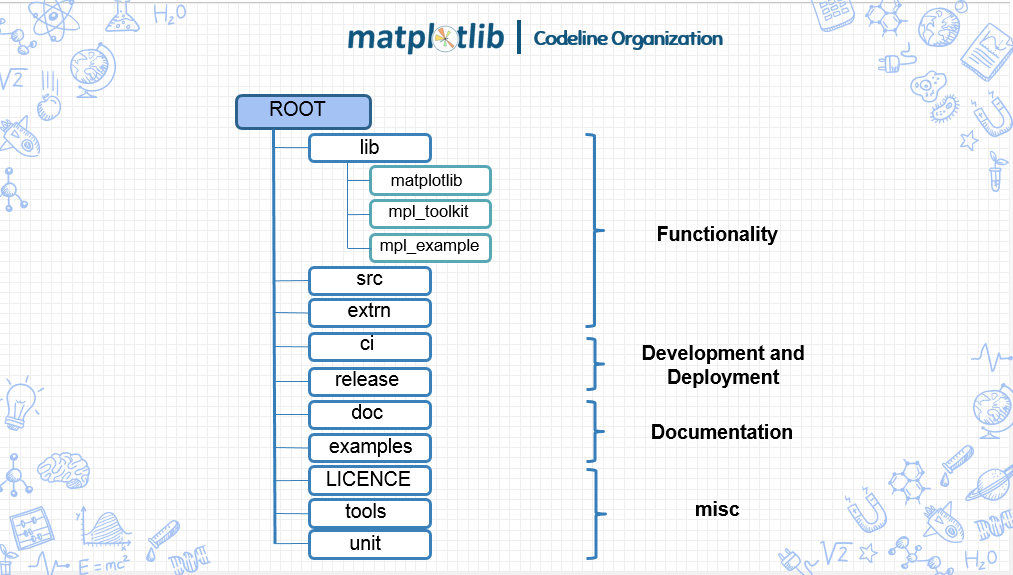
Figure 5. Codeline Organization of Matplotlib
The Functionality section contains code responsible for the functionalities of Matplotlib and the dependencies required. The main part of the Matplotlib library is contained in the lib directory which depends on both code in extern (external libraries packaged with Matplotlib) and src (c++ code made by the developers) for performance improvement. The lib directory is split into three main modules: matplotlib contains the core module for implementing 2D plotting, mpl_toolkits contains the toolkits module for extending functionalities outside of Matplotlib's scope, and mpl_examples contains a symbolic link to the examples directory for ease of access in regression testing.
The Development and Deployment section contains code used in the development and deployment process of Matplotlib. These are mostly used for developing Matplotlib and do not directly affect the functionality of Matplotlib. There are two directories: ci contains files needed by the continuous integration platforms and release contains compatibility code for deployment of Matplotlib across platforms. The main part of this category is actually in the scripts at the root directory that are used in the development process such as setup.py and tests.py.
The Documentation section contains code used to generate the documentation of Matplotlib. There are two directories: doc contains code to generate the documentation which is hosted at their website and examples contains example uses of Matplotlib.
The Miscellaneous section contains the rest of the code not contained in the previous three sections. The LICENSE directory is for legal purposes, while the tools and unit directory contains incidental scripts used for specific purposes only.
5.2. Module Organization
The Matplotlib source code is organized into several modules that encapsulates a coherent piece of functionality. Matplotlib modules are partitioned into three main categories as can be seen in Figure 6. These modules are organized in different abstraction layers where the top layer depends on the layers below it.

Figure 6. Module Structure Model of Matplotlib
The core module comprises the core Matplotlib functionality for implementing 2D plotting. The main functional components as described in the Functional View is implemented here. Most of the backend layer is encapsulated inside the backends module, while the scripting layer is accessed from the pyplot submodule which is autogenerated using boilerplate.py. Most of the code here is from the artist layer and is spread in various submodules.
Most of the submodules are in the root directory, but a few submodules have been grouped together inside their own directory which creates a larger module. The most important of these modules are axes which is responsible for drawing the plotlines, backends which contains handlers for different platforms, and both tri and projection which handle low level image transformations.
The toolkit module enriches the basic functionalities of Matplotlib and depends on the core module. There are currently two major projects in this module: axes_grid which adds functionalities to axes such as combining multiple axes or adding angles to axes, and mplot3d which adds pseudo-3D plotting to Matplotlib.
The platform module consists of supporting modules from external parties such as the basic Python language libraries (Python root library, Python extended library, script package library) and site package libraries such as scikit-learn and numpy.
The diagram above can be considered as an oversimplification as the connections between modules are much more complex. A closer look at the interdependencies of the submodules is done at the technical debt section.
5.3. Common Design Models
In this section, common designs that are used and standardized in the development of Matplotlib are described.
Common Process Standardization
Since Matplotlib is not a continuously running system, the use of logging is mostly for debugging purposes. Generally, there are two types of logging in Matplotlib, debugging traces which are handled by a class called Verbose, and warnings which are handled by the warning Python package.
Matplotlib requires intensive numeric calculations to efficiently plot 2D data. Instead of developing from scratch, Matplotlib uses third party libraries. For matrix operations and data handling, Matplotlib uses numpy, while for geometric calculations, it uses antigrain geometry and qhull. Commonly used functions that are shared among many classes such as datetime handling, are stored inside a utility module called cbook.
Design Standardization
Matplotlib is a community effort which is developed through GitHub. Development standards are communicated through their developers's guide.
Matplotlib uses PEP8 as a standard style for Python code. It is a set of coding standards created by the Python software foundation. To support Python 2 and 3 from a single code base, Matplotlib uses the six Python library. Meanwhile, design quality is maintained through Pull Request reviews and discussions in GitHub, and larger design goals are compiled into the Matplotlib Enhancement Proposal (MEP).
Testing Standardization
Matplotlib uses standard Python testing libraries for their testing process. The tests mainly consists of unit tests which tests small components of the code, and also a Matplotlib specific "image comparison test". This test generates specific images using the Matplotlib code and then compares the results with baseline images generated previously.
To be able to do the testing internally, developers are required to install pytest and mock. Ghostscript and Inkscape are also required for the image comparison test. To guarantee changes to the code do not introduce unexpected failures or conflicts, Matplotlib implements continuous integration using Travis CI for unix environments and Appveyor for windows. Both CI platforms are integrated to GitHub and run on every new Pull Request. Matplotlib also uses CodeCov to check the code coverage when there is a change in the test code. To accommodate testing on different versions of Python, Matplotlib uses tox.
6. Evolution Perspective
To understand more about the architecture of Matplotlib, we will take a look at its evolution over time. Matplotlib was originally developed as a visualization tool for medical research, but as time goes on, Matplotlib became a popular Python plotting library used by generic users. This interesting evolution of Matplotlib will be analyzed by comparing the state of Matplotlib in each minor and major releases.
Feature Evolution
Matplotlib uses semantic versioning for numbering their releases, which clearly separates major releases, minor releases, and bugfix patches. Figure 7 shows the timeline of Matplotlib version releases based on Matplotlib's version release documentation [3].

Figure 7. Matplotlib version history
v0.99: Added new features (mplot3d, axes grid toolkit and axis spine placement).v1.0: New backends (HTML5/Canvas), performance enhancements, and new features (complex subplots, triplots, multiple 'show' calls).v1.1: Introduced animations, new backends (qt4, IPython), new features (sankey diagrams), and improvements to legends and mplot3d.v1.2: Support for Python 3.x, new backends (pgf/tikz), new features (tri-surface plots, streamplots) and updated shipped dependencies (pytz and dateutil).v1.3: New backends (webagg), new features (sketch style) and a new setup script.v1.4: New backends (nbagg), added style package and new plotting features.v1.5: Interactive OO usage, support for pandas, new colormap and plotting features, and new tool manager.v2.0: Overhaul of the default styles (font size, colours, mplo3d), fast text rendering, and support for retina displays.
Matplotlib has changed over time to support the latest versions of Python while also dropping support for older versions. For example in v1.1 Matplotlib supports only Python 2.4 to 2.7, and then with release v1.2 Matplotlib supports Python 2.6, 2.7 and 3.1. On the current release v2.0, Matplotlib only supports Python 2.7 and 3.4+ which are the two major Python versions currently used. Each update also usually brings support for new backends and plotting features. The more recent updates has focused mainly on supporting web backends which shows that Matplotlib is adapting to the trend of web based interfaces.
Another interesting part is how Matplotlib evolves to comply with user's needs. Matplotlib is mainly built for 2D plotting, but along with newer user's needs, some releases (v0.99, v1.0, v1.1, and v1.3) make adjustments to Matplotlib to support pseudo-3D plotting. Matplotlib also just recently changed the default plot styles since it was considered not very pretty by the community.
Source Code Evolution
We used cloc to count the lines of code in Matplotlib over time. The graph can be seen in Figure 8.
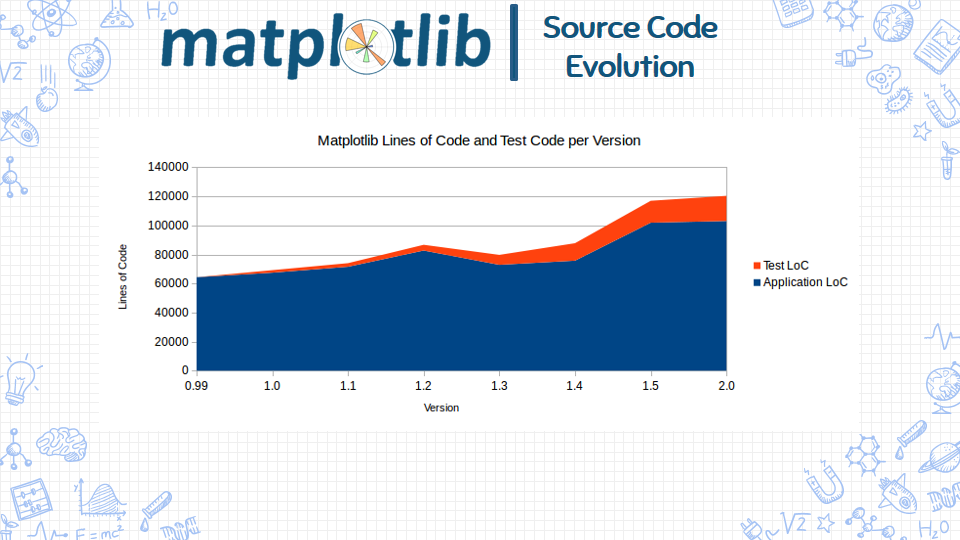
Figure 8. Matplotlib Lines of Code per Version
In general, the lines of code increases gradually over time, but there is a slight decrease of code from v1.2 to v1.3. According to the Matplotlib Enhancement Proposal 11 (MEP11), this was because of a refactor. Matplotlib changed dateutil, pytz, and pyparsing into optional dependencies to decouple these third-party libraries from the application code.
It can also be seen that Matplotlib did not have any test code at v0.99 but then started to add code testing in v1.0. Since then, in average the test code increases around 40% per release, while the application code only increased around 5% per release. This trend shows that over time, testing has become one area of focus in the development of Matplotlib.
7. Technical Debt Analysis
After understanding the overall architecture of Matplotlib, we now take a deeper look at the current Matplotlib source code along with recent changes to the code to identify technical debts that exist in the system. To do this, we did both static code analysis and manual code inspection. We also tried analyzing discussions happening in the community, but not much discussions were found that directly addressed technical debts.
From the analysis, there were some findings. One nice finding is that nearly all code in Matplotlib was classified as rank A by Radon with an average of 2.63, which is below the maximum threshold of 10 proposed by McCabe [5]. There were only 7 files that were marked as having a large cyclomatic complexity. We also found that there were no major outdated dependencies and most of the code were already written in idiomatic python. However, there are still a few technical debt that was identified and needs more attention.
Ambiguous Project Structure
When compared to other similar Python libraries such as scikit-learn or bokeh, Matplotlib's project structure can be considered messy. This is mainly because some files and directories are not self explanatory. For example, the unit directory in Matplotlib implies that it contains unit tests, but it actually contains problem specific testing scripts. The separation of the Matplotlib source code is also not clear between the src, lib, and extern directory.
These ambiguous code affect the developers of the system, potentially making development more tedious. There are currently also too much scripts in the root directory which would make it confusing for new contributors, but this is currently already being handled by the developers (#8276).
A simple step in improving this would be to put the contents of the unit directory as well as most scripts in the root directory into the tools directory. All functional code (lib, src, and extern) and build tools (ci, release, and some scripts in the root directory) can also be encapsulated into their own directory and renamed accordingly to better reflect their contents.
Messy Module Dependencies

Figure 9. Dependency Graph of Matplotlib
The dependencies between internal modules of Matplotlib generated by pydeps is shown in Figure 9. Modules from core is shown in green, modules from toolkit in yellow, and the other colors indicate external dependencies. It can be seen that the dependencies inside Matplotlib are not so structured and that modules are not well separated. The separation between toolkits and core is also not so clean.
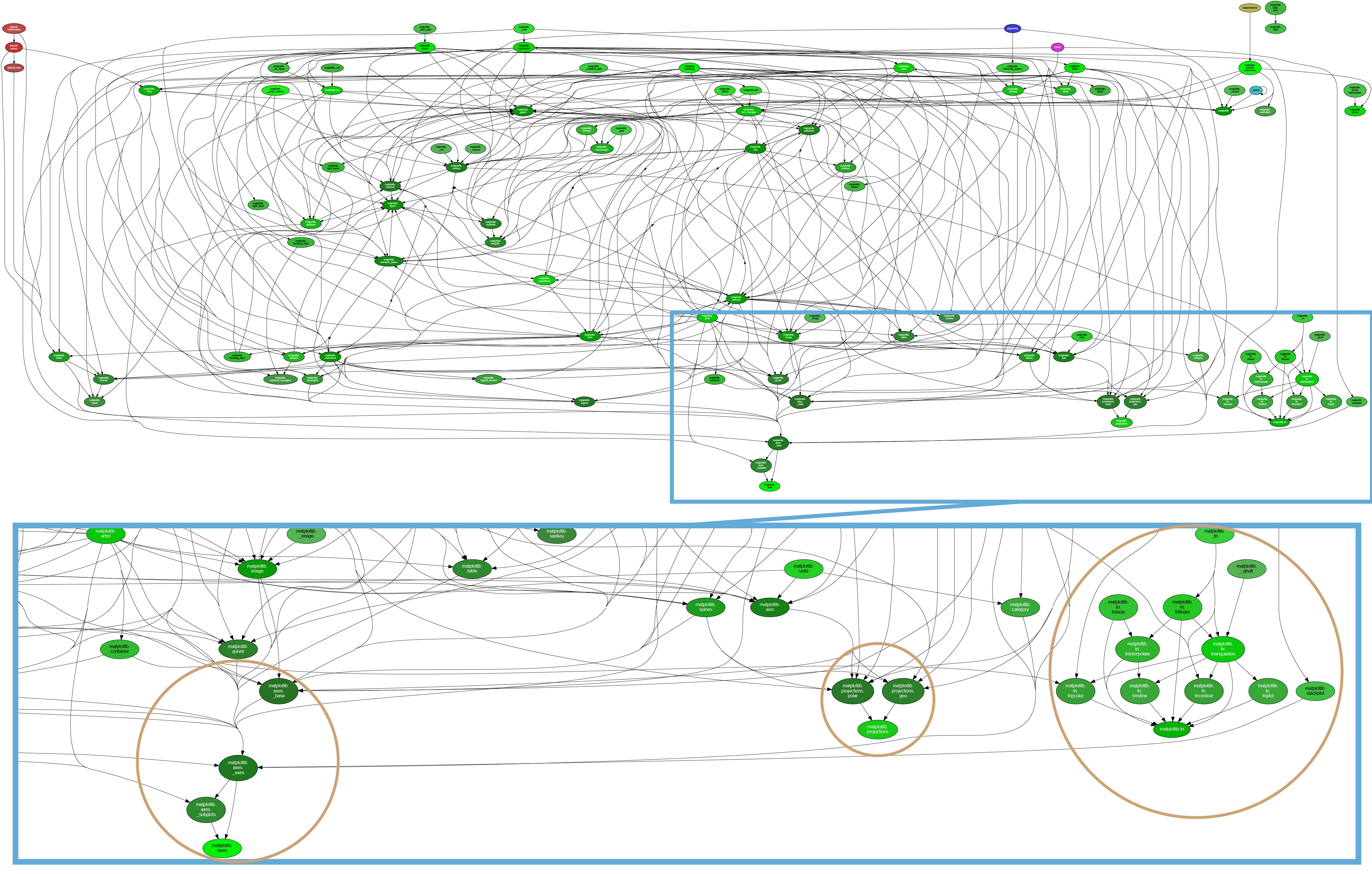
Figure 10. Trimmed Dependency Graph of Matplotlib Core
A trimmed dependency graph of the core module without backends and sphinxext is shown in Figure 10. A closer look at the bottom right side shows that there is a well separated module group which is tri. To the left of that, there are also two smaller groups which are projections and axes. This shows that there are some attempts at encapsulating large concerns. However, overall the module organization in Matplotlib needs more separation of concerns. Fixing this issue would need a large refactoring of the whole Matplotlib project.
Code Inconsistencies
Matplotlib has just recently migrated from using the nose testing framework into pytest. Despite this, some traces of the previous framework still exist in the system. The main trace we found is that the testing directory in each Matplotlib module which was previously created to extend the functionalities of nose, still exists until now. The Matplotlib website also still lists nose as their testing framework, but this is apparently already corrected in the code of the documentation and the website is not updated yet.
For logging purposes, Matplotlib has implemented their own utility class called Verbose, but many classes in Matplotlib still use a local debugging flag to control their debug loggings, and some even has local functions to handle this functionality. An example of this is in the backend_qt5agg.py file which uses a boolean flag named DEBUG.
There were also still 54 TODO and 13 FIXME that exist in the source code of Matplotlib at the time of our analysis, which shows there were some issues that are still not addressed yet.
This shows that the code inside Matplotlib is not very strongly standardized and maintained, which in the long run would make it harder for developers to extend the code since different classes have different code smell and conventions.
Low Code Coverage
Code coverage is a measure used to indicate how much code has been covered by a test. Low coverage implies that the program has a high chance of containing undetected bugs. High coverage does not necessarily signify all actions will be correctly processed by the code, but at least it indicates that the likelihood of correct processing is good [4].

Figure 11. Code Coverage of Matplotlib
Matplotlib uses Codecov to measure code coverage automatically. At the time of analysis, Matplotlib obtains 65.19% code coverage (Figure 11). This is still considered as a low code coverage as it is below the high threshold of 80% [4]. The full results of our investigation for each module can be seen in Figure 12 for the Core modules and Figure 13 for the Toolkit modules.
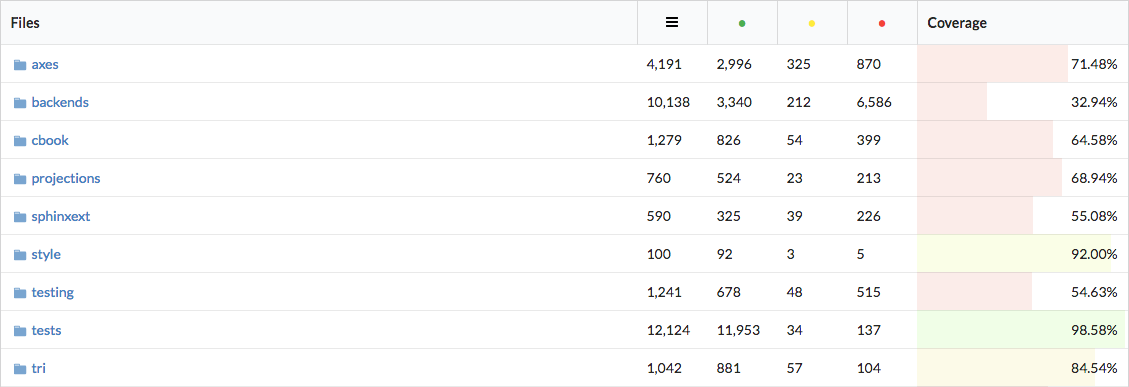
Figure 12. Code Coverage of Core Modules

Figure 13. Code Coverage of Toolkit Modules
A potential part of the code for improvement is the backends directory which currently only has 32% coverage albeit being a core part of Matplotlib. The backends is responsible for low level adjustments of Matplotlib to various graphic renderers, therefore improving code coverage in this part of Matplotlib would make future changes to Matplotlib more resistant to platform errors.
Long Testing Time
Another source of technical debt is how long it takes to run tests. The runtime of integration tests are not strictly limited, but for unit tests which are supposed to be run repeatedly, according to Martin Fowler, most experts agree that it should be fast and typically run less than a minute. A long unit test runtime means that the rate at which people can develop will be slowed down. The tests in Matplotlib when run in our own laptop achieved a runtime of around 7 minutes, while the average runtime of tests for continuous integration (in Jenkins) is around 20 minutes. This makes it hard to do rapid development of the Matplotlib code since it takes too long and the test script that is provided doesn't separate between unit and integration tests.
A possible solution is to separate out the integration tests, such as the Matplotlib image comparison test, into their own test script. This will reduce the number of tests that needs to be run frequently. If this is not enough, Martin Fowler also suggested that unit tests should be separated into a "compile suite" that is run on every compilation and a "commit suite" which is run before a commit (or usually on a pull request).
8. Conclusion
Matplotlib is one of the oldest yet reliable and well-known visualization library in Python. During our investigation of Matplotlib, we identified some interesting findings that we believe will be useful to understand the current state of Matplotlib.
John Hunter initially designed Matplotlib as a Python tool strictly for 2D plotting and targeted it towards people of an academic background. Now Matplotlib has evolved into a thriving community project while still staying true with the initial design goals. As an open source project, most of the stakeholders are developers, with the NumFOCUS organization providing financial support through donations. From our short experience contributing to the project, we have identified Thomas A. Caswell who is also one of the lead developer, as the person to contact regarding the development of Matplotlib.
From the analysis, we learned that the functionality of Matplotlib is conceptually split into three layers, which at a glance is simple. However, digging deeper into its code, the architecture of Matplotlib is actually quite complex, and at its current state there are still quite a few technical debts. For instance, the interdependencies of the modules are too unstructured which makes the separation of concerns unclear. This makes it hard for most developers to contribute or change specific components of the system. There are also quite a few inconsistencies and lack of standardization in the code of Matplotlib, and some ambiguity in the project structure.
We have found that along its development, Matplotlib has improved a lot in terms of code tests, but currently the code coverage of Matplotlib is still too low. More tests need to be added especially to the backends module. The test script of Matplotlib is also not separated well between different types of tests, resulting in a very long test runtime which inhibits the speed of development.
To conclude, Matplotlib has evolved a lot from the research tool created by John Hunter, to the vastly used data plotting library it is today. Albeit the technical debts that still exist until now, Matplotlib has shown promising growth over the years. We strongly suggest people to contribute to Matplotlib as it has an open community that warmly welcomes new contributors as we have experienced in proposing some contributions.
